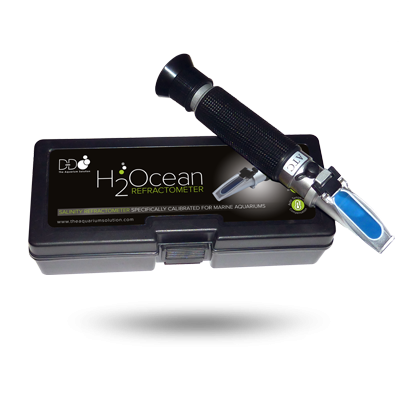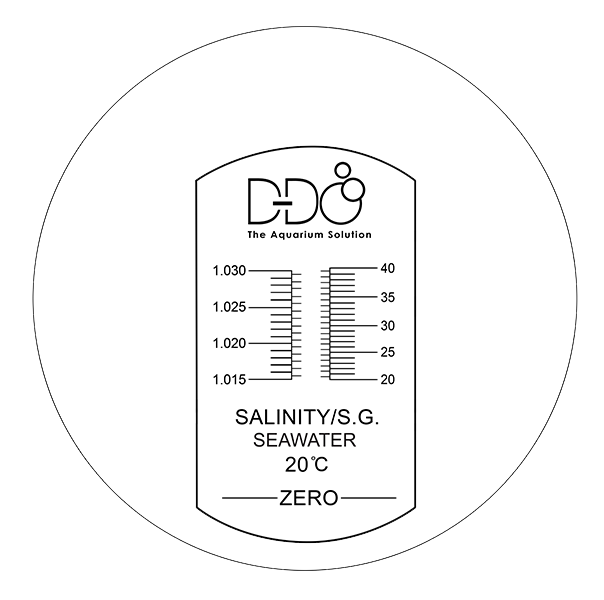D-D True Seawater Refractometer
Hand held instrument for the measurement of the TRUE Salinity and Specific Gravity (S.G.) of sea water by refractive index.
What is different about the D-D Seawater Refractometer?
Almost all hand held salt water refractometers available to the hobby are designed and calibrated for the testing of brine solutions, i.e. sodium chloride, and are not calibrated for the refractive index of natural sea water.
Even though the largest percentage of salt in the sea is sodium chloride, the presence of other significant ions such as magnesium and calcium in natural sea water results in a different refractive index relative to that of brine. A standard salt (brine) refractometer will therefore not give the correct salinity for natural sea water (NSW) and a conversion factor must be applied.
For example a 35ppt solution of NSW has the same refractive index as a 36.5ppt solution of brine.
After extensive development, D-D’s new ATC refractometer addresses this issue as the scale is calibrated for seawater giving true salinity results for aquarium use when correctly calibrated and greater accuracy than previously attainable.
Our refractometers feature a copper internal body which conducts heat faster than cheaper aluminium and plastic versions for faster and more accurate auto temperature compensation.
Product Code AQPR001

